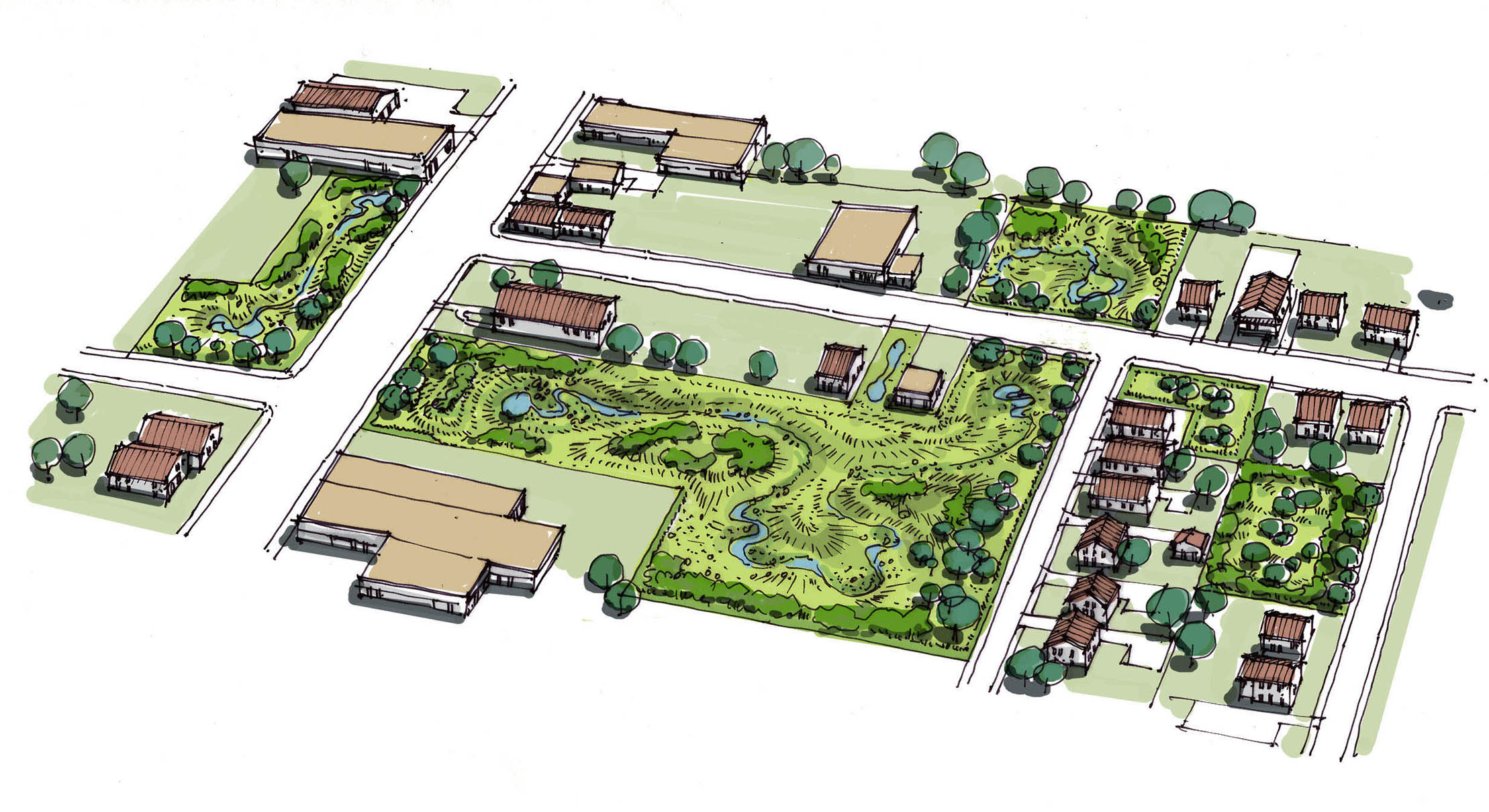Kent State’s Cleveland Urban Design Collaborative Receives National Sustainability Award
Posted Feb. 8, 2012Kent State University is a lead partner in a collaborative effort to address population decline and large-scale urban vacancy in Cleveland. The initiative Re-imagining a More Sustainable Cleveland has been selected to receive the American Planning Association’s (APA) 2012 National Planning Excellence Award for Innovation in Best Practices for Sustaining Places, the profession’s highest honor, at its April conference.
 The Innovation in Best Practices for Sustaining Places program recognizes initiatives, plans or programs that mitigate adverse impacts from development and everyday living.
The Innovation in Best Practices for Sustaining Places program recognizes initiatives, plans or programs that mitigate adverse impacts from development and everyday living.
Re-imagining a More Sustainable Cleveland, an ongoing initiative, is a collaborative effort with Kent State’s Cleveland Urban Design Collaborative, the City of Cleveland, Neighborhood Progress, Inc. and ParkWorks, along with 30 partner organizations from the Northeast Ohio region. Kent State’s Cleveland Urban Design Collaborative is the home of the university’s urban design graduate program. Supported by the College of Architecture and Environmental Design, Kent State’s Cleveland Urban Design Collaborative offers urban design expertise and applied research in the service of urban communities, design professionals and public policy efforts.
“This honor places Kent State’s Cleveland Urban Design Collaborative in the national limelight as a resource in urban research and urban design,” said Douglas L. Steidl, dean of Kent State’s College of Architecture and Environmental Design. “The recognition affirms Kent State as a leader in civic rejuvenation, urban research and collaborative partnering.”
Re-imagining a More Sustainable Cleveland includes a plan, policy recommendations, zoning changes and demonstration projects for sustainable land reuse. The initiative is helping to reinvent Cleveland for the 21st century.
“The Re-imagining Cleveland effort positions the city as a laboratory for restoring urban ecosystems through the use of vacant properties to sequester carbon, increase biodiversity, restore rivers and Lake Erie, eradicate hunger and improve public health,” said Terry Schwarz, director of Kent State’s Cleveland Urban Design Collaborative. “The work represents a remarkable collaboration between the city, local non-profit organizations, community development corporations, private sector partners and funders.”
Re-imagining a More Sustainable Cleveland addresses vacancy issues by introducing non-traditional urban land uses to city neighborhoods. These land uses will reduce the supply of vacant property and, in turn, increase real estate values. The different land uses are divided into three broad categories, including:
- Treating vacant sites as viable opportunities for future development;
- Introducing green infrastructure to expand and connect parks and green spaces using vacant land and to restore the urban tree canopy, manage storm water and reclaim damaged ecosystems; and
- Creating productive landscapes by using land in a way that brings economic benefits, including agricultural uses and the generation of alternative energy.
“Cleveland is turning its population decline into a new opportunity by engaging in ecosystem restoration, infill development and land stabilization strategies,” said Marie L. York, FAICP, APA Board Director and 2012 Awards Jury Co-Chair. “Cleveland is tackling issues facing many older industrial cities in our country and serving as an example of how to address these challenges head on.”
The initiative is also notable for its citizen participation and engagement of community members with workshops, an interactive website, a widely distributed vacant land ideas-to-action booklet and a grant program.
“By taking advantage of opportunities for gradual re-growth and stabilization of the city’s real estate market, Cleveland is laying the groundwork for future sustainable development,” York said.
Re-imagining a More Sustainable Cleveland can be replicated by other cities across the nation, and it recently influenced a planning effort in Detroit as well as policy initiatives and funding programs developed by the U.S. Department of Housing and Urban Development and the U.S. Environmental Protection Agency.
“The APA recognized this project in part because of its potential to impact national policies on smart growth and climate change, since overall U.S. population growth presents opportunities for Cleveland and other older industrial cities,” Schwarz said.
The award for Re-imagining a More Sustainable Cleveland will be presented at a luncheon at APA’s National Planning Conference in Los Angeles on April 16. Schwarz and Robert Brown of the Cleveland City Planning Commission plan to attend to accept the recognition. The initiative also will be featured in an upcoming issue of Planning magazine, APA’s flagship publication.
APA’s national awards program is a proud tradition established more than 50 years ago to recognize outstanding community plans, planning programs and initiatives, public education efforts and individuals for their leadership on planning issues. To view all the APA 2012 award recipients, visit www.planning.org/awards/2012.
For more information on Kent State’s Cleveland Urban Design Collaborative, visit www.cudc.kent.edu.
Photo Caption:
The Re-imagining a More Sustainable Cleveland effort recommends the use of vacant sites in strategic locations throughout the city to build a green network for managing storm water and connecting city residents to Lake Erie and the Cuyahoga River.
Media Contacts:
Terry Schwarz, tschwarz@kent.edu, 216-357-3426
Bob Burford, rburford@kent.edu, 330-672-8516

Facebook
Twitter
Google+
LinkedIn
Instagram
YouTube
More Ways to Connect